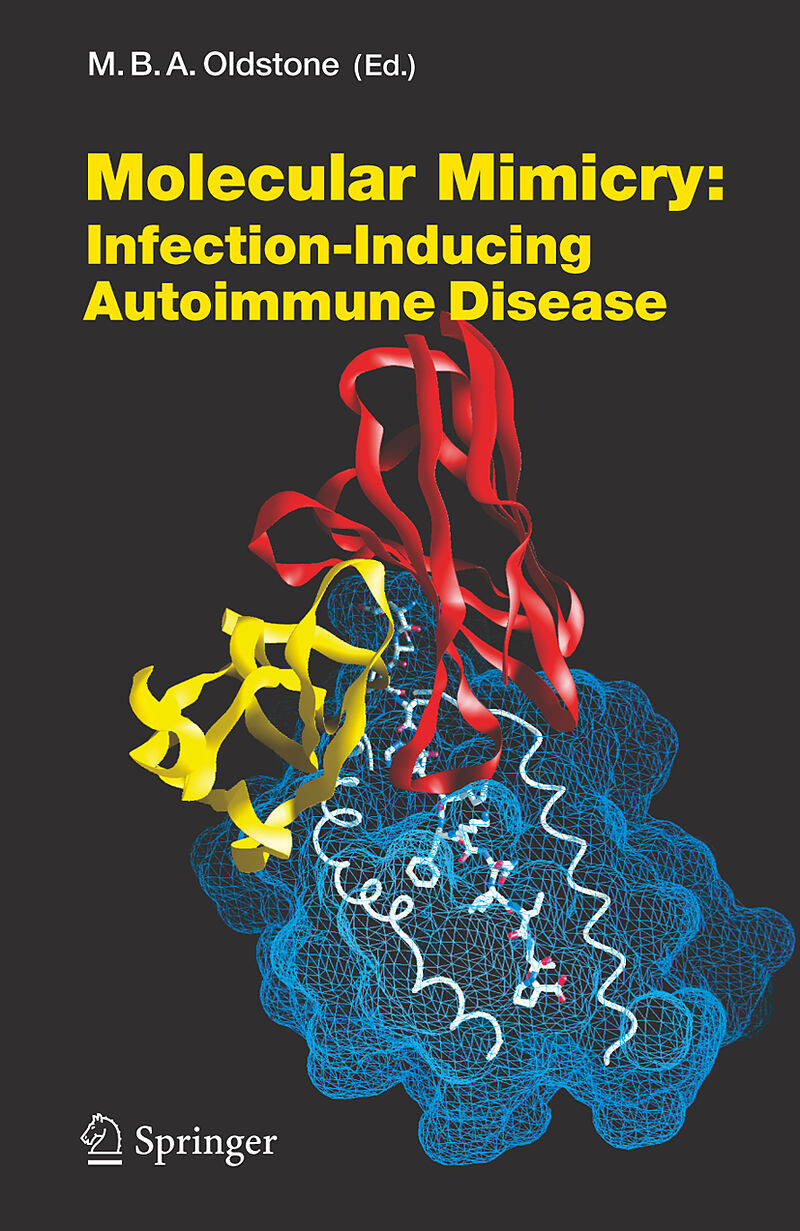Molecular Mimicry: Infection Inducing Autoimmune Disease
Einband:
Fester Einband
EAN:
9783540255970
Untertitel:
Current Topics in Microbiology and Immunology 296
Genre:
Medizin
Herausgeber:
Springer Berlin Heidelberg
Auflage:
2005
Anzahl Seiten:
180
Erscheinungsdatum:
03.11.2005
ISBN:
3540255974
The purpose of this review is to examine the potential role of molecular mimicry in the pathogenesis of human T-lymphotropic virus type 1 ((HTLV- 1)-associated myelopathy/tropical spastic paraparesis (HAM/TSP)). Comp- hensive reviews on the pathogenic mechanisms of HTLV-1-associated human diseases are available throughout the medical literature (Bangham 2000,, 2003; Barmak et al. 2003; Jacobson 2002; Levin and Jacobson 1997; Nagai and Osame 2003; Osame 2002). Approximately 25 years ago the ?rst human retrovirus, HTLV-1, was isolated (Poeisz et al. 1980). Subsequently, infection with HTLV-1 was shown to cause adult T-cell leukemia (ATL) and HAM/TSP (Gessain et al. 1985; McFarlin and Blattner 1991; Osame et al. 1986; Poeisz et al. 1980; Yoshida et al. 1987). HTLV-1 may infect up to 30% of people in endemic areas and 10 20 million people worldwide (Barmak et al. 2003; Edlich et al. 2000). However, only 1% 5% develop either ATL or HAM/TSP, the remainder being clinically asymptomatic carriers of HTLV-1 (Bangham 2000, 2003; Barmak et al. 2003; Jacobson 2002; Levin and Jacobson 1997; Nagai and Osame 2003; Osame 2002). Why infection with HTLV-1 causes ATL or HAM/TSP in some people while the vast majority of individuals are asymptomatic is largely - known. Some possible factors that may differentiate the asymptomatic from the diseased state include viral strain, human histocompatibility leukocyte antigen (HLA), viral load, and the immune response (Bangham 2000, 2003; Barmak et al. 2003; Jacobson 2002; Levin and Jacobson 1997; Nagai and Osame 2003; Nagai et al. 1998; Niewiesk et al. 1994; Osame 2002).
Includes supplementary material: sn.pub/extras
Inhalt
Molecular Mimicry, Microbial Infection, and Autoimmune Disease: Evolution of the Concept.- The Structural Interactions Between T Cell Receptors and MHC-Peptide Complexes Place Physical Limits on Self-Nonself Discrimination.- A Virus-Induced Molecular Mimicry Model of Multiple Sclerosis.- Suppression of Autoimmunity via Microbial Mimics of Altered Peptide Ligands.- Molecular and Cellular Mechanisms, Pathogenesis, and Treatment of Insulin-Dependent Diabetes Obtained Through Study of a Transgenic Model of Molecular Mimicry.- Trypanosoma cruzi-Induced Molecular Mimicry and Chagas' Disease.- HTLV-1 Induced Molecular Mimicry in Neurological Disease.- Molecular Mimicry: Anti-DNA Antibodies Bind Microbial and Nonnucleic Acid Self-Antigens.- Chlamydia and Antigenic Mimicry.

Leider konnten wir für diesen Artikel keine Preise ermitteln ...
billigbuch.ch sucht jetzt für Sie die besten Angebote ...
Die aktuellen Verkaufspreise von 6 Onlineshops werden in Realtime abgefragt.
Sie können das gewünschte Produkt anschliessend direkt beim Anbieter Ihrer Wahl bestellen.
Loading...
Die aktuellen Verkaufspreise von 6 Onlineshops werden in Realtime abgefragt.
Sie können das gewünschte Produkt anschliessend direkt beim Anbieter Ihrer Wahl bestellen.
| # | Onlineshop | Preis CHF | Versand CHF | Total CHF | ||
|---|---|---|---|---|---|---|
| 1 | Seller | 0.00 | 0.00 | 0.00 |
